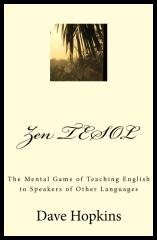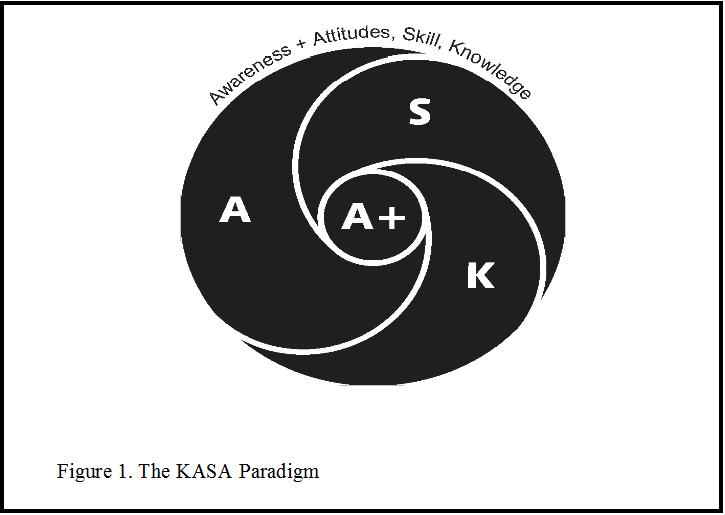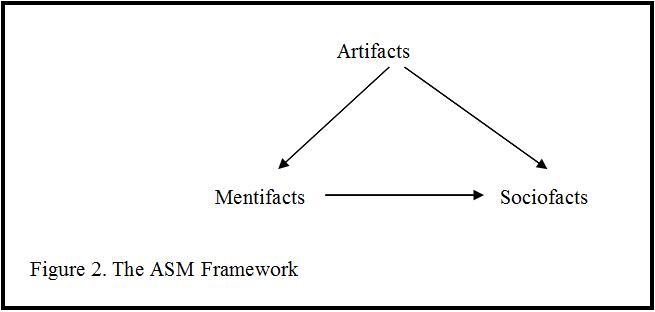
Late
Autumn 2011
Training
Trainers
by David
Hopkins
Post-
Secondary
Outcomes
for
Latinos
by
Robb
Scott, Ed.D.
Expanding
the Goals
of
ESOL
by
Alvino
Fantini,
Ph.D.
![]()
/Index/
/Letters/
/Profiles/
/Search/
/Podcasts/
![]()
Subscribe
for free!



Expanding the Goal of ESOL
Teaching ESOL as Intercultural Competence
Alvino E. Fantini holds degrees in Latin American studies, anthropology, and applied linguistics.
He has conducted significant intercultural research and published widely, including Language Acquisition of a Bilingual Child (Multilingual Press, 1985) and New Ways in Teaching Culture (TESOL, 1997). [Editor's note: In a review of Dr. Fantini's original edition of "Language Acquisition of a Bilingual Child," Wendy E. Redlinger wrote: "The paucity of longitudinal studies dealing with developmental bilingualism, particularly from a sociolinguistic perspective, makes Fantini's work a welcome contribution to the literature....It is a carefully documented diary account of the Spanish/English bilingual development of the author's son, Mario, through age 5. Mario was addressed only in Spanish by his parents and experienced minimal exposure to English until entering nursery school..." (Language in Society, Vol. 9, No. 1, April 1980, pp. 133-135, Cambridge University Press).]
Alvino served as an advisory member of a panel that developed the National Foreign Language Standards for US education, is a past president of the Society for Intercultural Education, Training, and Research International (SIETAR), and is a recipient of SIETARís highest award, Primer Inter Pares. He currently serves as education consultant to the Federation of The Experiment in International Living, as director of the World Learning institutional archives, occasional adjunct faculty and lecturer, and an international consultant. (Except for the editor's note, all of the biographical information above is from Professor Fantini's page at SIT.)
The following is republished with the author's permission.
Now,
more than a decade into the new millennium, the effects of
globalization are widely felt. Today, more people around the world
have direct and indirect contact with each other than ever before.
The effects of this present new opportunities and new challenges.
Although intercultural transactions are conducted in many languages,
English is pervasive around the world. This situation raises new
issues for ESOL educators, who are especially well positioned to
prepare students for both the opportunities and the challenges. As a
profession, what should our response to these issues be and are we as
ESOL educators assuming a proper role? Despite
many important advances in our field over the years, intercultural
concerns remain primarily within special interest groups. A more
effective response to these concerns, however, must involve our
collective efforts. As Sercu (2006) proposes, we may need to broaden
our professional identity. For this to happen, however, we need to
reexamine our goal and our role as language educators.
If
our goal is to prepare students for effective, appropriate, and
positive intercultural participation through effective communication,
our students need not only to make themselves understood, but also to
gain acceptance behaviorally and interactionally, especially because
acceptance by others is more often strained by offending behaviors
than by incorrect grammar. This insight, in fact, prompted the
development of the field of intercultural communication more than 50
years ago. In today’s world, we need to rethink the design and
implementation of language courses, given their potential to affect
millions of people worldwide.
Curiously,
intercultural educators who explore perceptions, behaviors, and
interactional strategies mostly ignore the specific language of
encounters. And conversely, language teachers generally overlook
behavioral and interactional aspects; after all, we call ourselves
language teachers, not teachers of intercultural competence. Yet the
latter is precisely what is needed to produce competent English
language learners.
Intercultural
abilities have been identified by a great many names: global
competence, transcultural communication, and global
intelligence, among others. No clear consensus exists among
interculturalists about the terms or their meanings. An extensive
survey of the literature (over 240 publications), however,
substantiates intercultural (communicative) competence (ICC)
as the most widely used and most comprehensive term. It
is clear that ICC involves a complex of
abilities that are necessary to perform effectively and appropriately
when interacting with others who are linguistically and culturally
different from oneself. Whereas effective
reflects a view of one's own
performance in the target language-culture (LC2; i.e., an etic
or outsider's view), appropriate
reflects how native speakers
perceive such performance (i.e., an emic
or insider's view). Our task, then,
as ESOL educators is to help students recognize their etic stance
while attempting to uncover the emic viewpoint. The aim is not
necessarily that students will achieve native-like fluency, but that
they will develop some degree of ability in communicating and
interacting in the style of LC2 interlocutors.
Based
on the results of the survey of the literature, I proposed a construct
of ICC with multiple and interrelated components, as follows
(described in more detail below): a cluster of characteristics, three
areas, four dimensions, target language proficiency, and
developmental levels. Not all of these components, however, are
equally promoted through classroom work alone; direct experience with
the LC2 greatly enhances their development. This observation led the
Consortium for North American Higher Education Collaboration and the
American Council on International Intercultural Education to strongly
endorse academic mobility and other intercultural experiences for all
college students.
Nonetheless,
ESOL classes initiate processes that often lead to intercultural
experiences, and ESOL classes provide venues where students can
process their experiences that occur outside the classroom. Both
situations assume, of course, appropriate course designs and
strategies.
Characteristics
of ICC most commonly cited in the literature are flexibility, humor,
patience, openness, interest, curiosity, empathy, tolerance for
ambiguity, and suspending judgments, among others.
The
three interrelated ICC areas are the ability to establish and
maintain relationships, the ability to communicate with minimal loss
or distortion, and the ability to cooperate to accomplish tasks of
mutual interest or need. Each area is embedded within the others; no
one area alone is adequate for ICC.
Consider
also the four dimensions of ICC: knowledge, (positive) attitudes (or
affect), skills, and awareness (shown below in the so-called KASA
Paradigm). All four allude to both target culture (LC2) and one's
native culture (LC1); this is especially true of awareness placed at
the center. Awareness is enhanced through reflection and
introspection by comparing and contrasting the LC1 and the LC2. It
differs from knowledge, focusing on the self vis-à-vis
everything else in the world—things, people, thoughts—and
ultimately elucidates what is most relevant to one’s values and
identity. Whereas knowledge can be forgotten, awareness is
irreversible.
Language
proficiency is central to ICC (although not equal to it) and, of
course, central to our task as ESOL educators. Communicative ability
in the target language enhances all other ICC aspects in quantitative
and qualitative ways: Grappling with another language causes people
to confront how they perceive, conceptualize, and express themselves,
and it promotes new communication strategies on someone else's terms.
This challenge aids in transcending and transforming one’s
habitual view of the world. Conversely, lack of a second language,
even minimally, constrains people to think about the world and act
within it only in their native system. Lack of a second language,
then, deprives people of a valuable aspect of intercultural
experience (suggesting why ESOL teachers must also be students of
another tongue).
Implementing
Cultural and Intercultural Exploration
Both ESL and EFL contexts present different possibilities for
cultural exploration. In the ESL context, learners are immersed in an
English-speaking milieu and classroom work is naturally bolstered by
continuing exposure to English, even after classes are over. In the
EFL context, however, English is often limited to the classroom
itself, with fewer opportunities for real-life exposure. Nonetheless,
in both situations cultural and cross-cultural exploration is
essential for furthering students’ development of intercultural
competence. The
Process Approach Framework (Fantini, 1999) can help to ensure the
inclusion of cultural and cross-cultural activities in the classroom.
This framework posits seven stages to guide lesson plan development;
these are:
Presentation of
new material
Practice in
context
Grammar
exploration
Transposition
(or use)
Sociolinguistic
exploration
Target culture
exploration
Intercultural
exploration
This
framework establishes an explicit process that clarifies objectives
and activities that are appropriate for each of the seven stages of a
lesson unit. It also helps teachers select, sequence, and evaluate
learning and teaching activities that are chosen because of their
match with learning objectives. Most important, when developing the
course syllabus and lesson plans, teachers are reminded that stage
5–7 activities form part of each lesson cycle. Of course, not
all stages need to be covered in a single lesson; rather, together
they form a unit of material in which the cycle from stages 1 to 7 is
completed before going on to present new material. In the end, what
remains important is that language, cultural, and cross-cultural
exploration together form the integral parts of each unit and
together enhance the development of intercultural competence. A
second framework that aids in cultural and cross-cultural exploration
addresses relationships among artifacts, sociofacts, and mentifacts
(ASM; B. Fantini & Fantini, 1997), a model adopted by the
American Council on the Teaching of Foreign Languages as part of the
National Standards for Foreign Languages.
Based
on a sociological concept, this framework interrelates three cultural
dimensions: artifacts (things people make), sociofacts (how people
come together and for what purpose), and mentifacts (what people
think or believe). This scheme reminds us that whatever dimension one
begins with, the other two are also present and available, and their
exploration helps deepen understanding of the target language–culture
paradigm.
For
example, if we consider any object or item (say, a sandwich), we can
investigate, first of all, what a sandwich is (e.g., lunch, snack,
bread and cold cuts); then what types of people use a sandwich, and
how (e.g., working people, students, for picnics, bite size to
accompany cocktails); and finally, what the notion of sandwich
represents or means (e.g., portable, inexpensive, quick, common
fare). This exploration goes beyond merely considering cultural
items; it encourages the consideration of their social uses and
significance. In addition, comparing the artifacts, sociofacts, and
mentifacts of host culture items with those of the learners’
cultures (e.g., sandwiches with tacos or rice balls) permits
cross-cultural investigation. Many
varied, interesting, and exciting activities exist to help address
the cultural and cross-cultural aspects of language. Some have been
developed within the intercultural field yet fit nicely into stages
5–7. For example, New Ways in Teaching Culture (Fantini,
1997) contains 50 activities selected from submissions sent by
educators from around the world and grouped according to their focus
on sociolinguistic, cultural, or intercultural exploration. Of
the many possibilities, I will describe one class of
techniques—operations—which are essentially ordinary
activities from everyday life that reveal cultural information. One
example is how to prepare a peanut butter and jelly sandwich,
something that every young (and even older) American is familiar
with. Have
students sit in a semicircle so that they can all witness the
operation and provide some background or context for the event. Then,
using real props, make a peanut butter and jelly sandwich, explaining
the process one step at the time. After completing the operation, ask
students to recount what they experienced and to narrate the precise
steps in sequence. Then have the class give instructions to a
volunteer for making a second sandwich. When completed, students can
taste small pieces of the sandwich and comment on their reactions.
Cross-cultural exploration can be accomplished by then having
students discuss comparable snacks in their own cultures. Innumerable
operations and variations are possible as follow-up activities.
Helping students develop intercultural competence is not only fun, it
is also essential. Frameworks like the Process Approach and the ASM
models can help teachers develop lesson plans that include activities
that explore cultural and cross-cultural aspects of English. These
activities add new dimensions to the traditional language class while
helping students develop the knowledge, attitude, skills, and
awareness that will foster development of the competence they need
for English-speaking contexts.
Developing
ICC is clearly a challenge—for educators and learners alike—but
its attainment makes room for exciting possibilities. It offers a
chance to transcend the limitations of one's own worldview. "If
you want to know about water," it has been said, "don't ask
a goldfish." Intercultural contact is a provocative educational
experience precisely because it permits people to learn about others
and themselves. On the other hand, a lack of ICC can result in
negative outcomes such as the misunderstandings, conflict, ethnic
strife, and genocide that result from failed interactions across
cultures.
Today,
everyone needs ICC, and we as language educators play a major role in
this effort. Achieving this, however, requires a paradigm shift—and
an expansion of our professional vision.
References Fantini,
A. E. (Ed.). (1997). New ways in teaching culture.
Alexandria, VA: TESOL. Fantini,
A. E. (1999). Comparisons: Towards the development of
intercultural
competence.
In J. K. Phillips (Ed.), Foreign language standards (pp.
165–218). Lincolnwood, IL: National Textbook Company. Fantini,
B., & Fantini, A. E. (1997). Artifacts, sociofacts,
mentifacts: A sociocultural
framework.
In A. E. Fantini (Ed.), New ways in teaching culture (pp.
57–61). Alexandria, VA: TESOL. Sercu, L. (2006).
The foreign language and intercultural competence teacher: The
acquisition
of a new professional identity. Intercultural
Education, 17, 55–72.
2011 ESL MiniConference Online
PDF conversion by PDF Online
 A senior faculty member at the School for International Training since 1964, Alvino helped turn the Sandanona estate into the present SIT Graduate Institute. He has worked in language education and intercultural communication for over 40 years in the US and abroad, in intensive and extensive programs, in education and training, in field situations and academia, and with numerous languages and cultures.
A senior faculty member at the School for International Training since 1964, Alvino helped turn the Sandanona estate into the present SIT Graduate Institute. He has worked in language education and intercultural communication for over 40 years in the US and abroad, in intensive and extensive programs, in education and training, in field situations and academia, and with numerous languages and cultures.

Whereas most
teachers are familiar with stages 1–4, the latter stages are
less common. But including these three additional stages ensures that
language exploration is complemented by explicit attention to
sociolinguistic, cultural, and intercultural aspects. Textbooks
generally focus on language structure and, increasingly,
communication (stages 1–4), but pay little attention to stages
5–7, and teachers must often develop such activities on their
own (or not).

Article by Alvino E. Fantini, Ph.D.
Professor Emeritus of Language Teacher Education
The SIT Graduate Institute
Republished with permission of the author